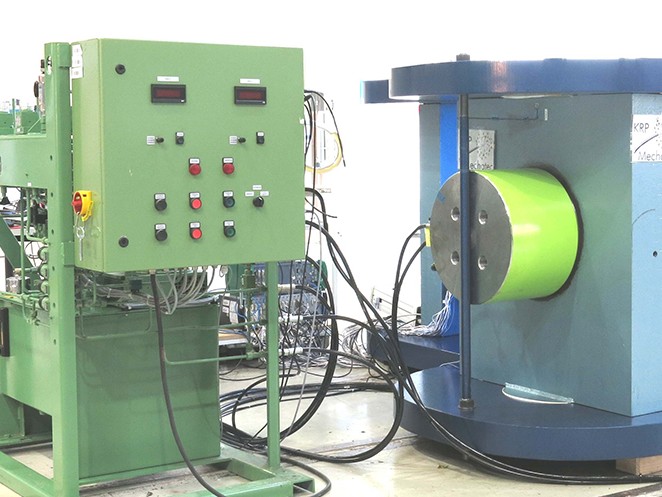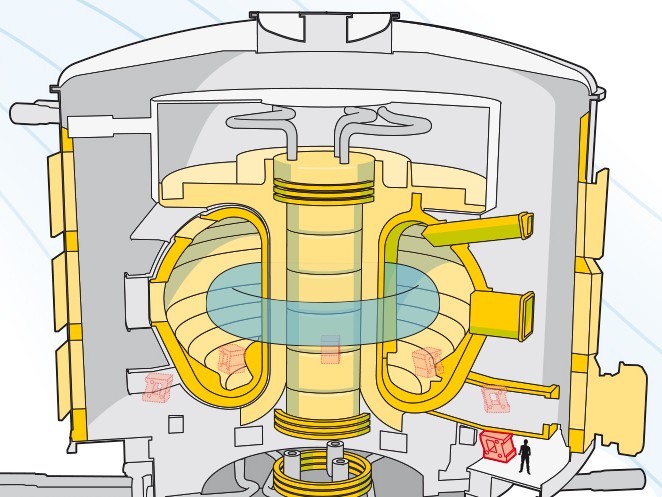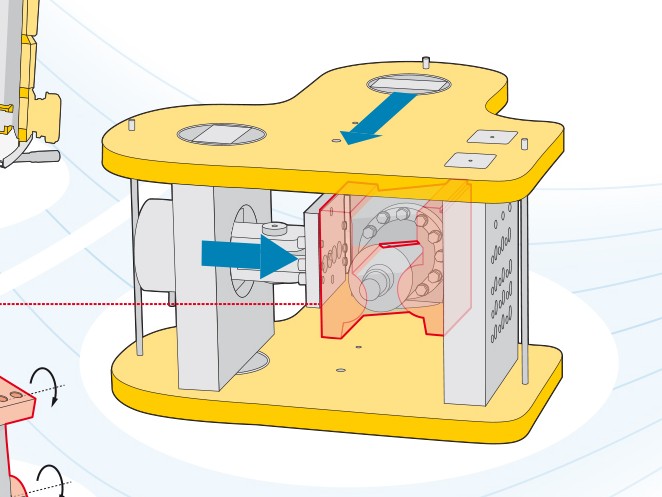Test rig for world’s biggest experimental fusion reactor
An international consortium plans to build a nuclear fusion reactor to generate power. thyssenkrupp Schulte helped with preparations for the reactor.
thyssenkrupp Schulte is helping drive forward one of the world’s most significant scientific projects: The international research consortium ITER has invested billions in this experiment to build a nuclear fusion reactor which will produce energy. Unlike a solar power plant, which collects energy from the sun and converts it into electricity, a nuclear fusion reactor reproduces the process that takes place inside the sun: two different types of hydrogen fuse to create a fast-moving neutron. The reactor then produces power using the kinetic energy of this neutron.
A 10,000-metric ton chamber
A number of feasibility studies are needed before work can begin, not least because the sheer size of the project represents new territory for researchers in materials science. One of the test reactor’s most important components is the vacuum chamber, which will be used to generate extremely high pressure for the fusion process. This part is the reason why the system weighs 10,000 metric tons – approximately the weight of the Eiffel Tower. During the fusion process, massive temperature fluctuations cause the steel colossus to expand and contract, and it must be held up on flexible steel supports that help to cushion these movements. Nine supports will be used in the structure and thyssenkrupp Schulte was involved in developing these components.
Comprehensive consultation
The Southern German company KRP-Mechatec Products, a specialist in aviation and aerospace technology as well as in fusion experiments, was contracted to perform a feasibility analysis in cooperation with the Technical University of Munich at the Garching campus. Because selecting the right steel and designing the test setup requires sophisticated specialist expertise, KRP contacted thyssenkrupp Schulte in Munich for support in these areas. This somewhat unusual request was fielded by Diana Löhr from Special Sales for Special Structural Steel. “The task was to build a test setup that would test a steel support scaled 1:3 for stability. It was clear from the get-go that we wouldn’t be able to do this alone, but I knew that we had the expertise and the partners to get the job done.” First, experts from thyssenkrupp Schulte and thyssenkrupp Materials Austria developed and optimized the design schematics. The next challenge was to select the right material. The selected material had to display high tensile strength and toughness. thyssenkrupp Schulte advised its customer on the feasibility of each process step, in particular with regard to manufacturing tolerances.
Nothing is impossible
As a cooperation partner, thyssenkrupp Schulte was also able to involve a customer in the contract. The experts at Schwabenland Meisterbetrieb in Benediktbeuren near Bad Tölz, Germany conducted the milling work on the test setup that would later be used to simulate the pressure on the steel supports. “This was not just a walk in the park – we worked together with Schwabenland to develop something entirely new,” says the sales expert. “Because the steel we were using cannot be welded, we designed a special connector system.” After completing the test setup, thyssenkrupp Schulte delivered the system to Garching for the simulation. At the Technical University, the test supports underwent three days of testing with force applied to different axes. The result: “The supports withstood pressures of up to 500 metric tons. Our test setup served its purpose to the letter.”
This resulted in a custom design in line with individual requirements. “The challenge for us as service provider lay in providing tailored advice,” says sales staff memer Diana Löhr: “Our expertise helped us find the ideal solution for all our customer’s requirements.”
Clean vision of the future
Years of research are still required before this system can commence operation at Saint-Paul-lès-Durance in the south of France. In addition to the European Union, project partners include China, India, Japan, Russia, South Korea, and the United States, meaning that the work will be divided up among companies from all over the world. The vacuum chamber, which will one day withstand temperatures in excess of 100 million degress, will be built by a steel manufacturer in Korea. The consortium plans to conduct its first test run of the reactor in 2050.


